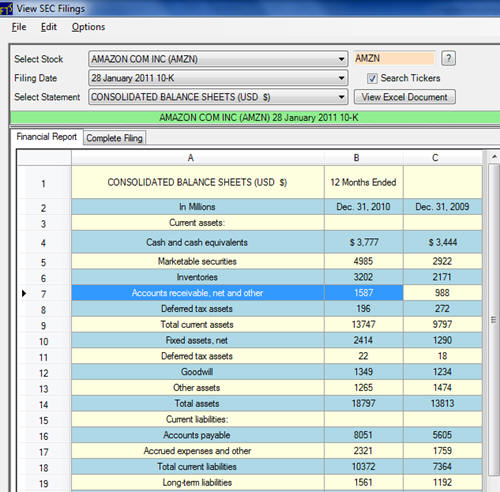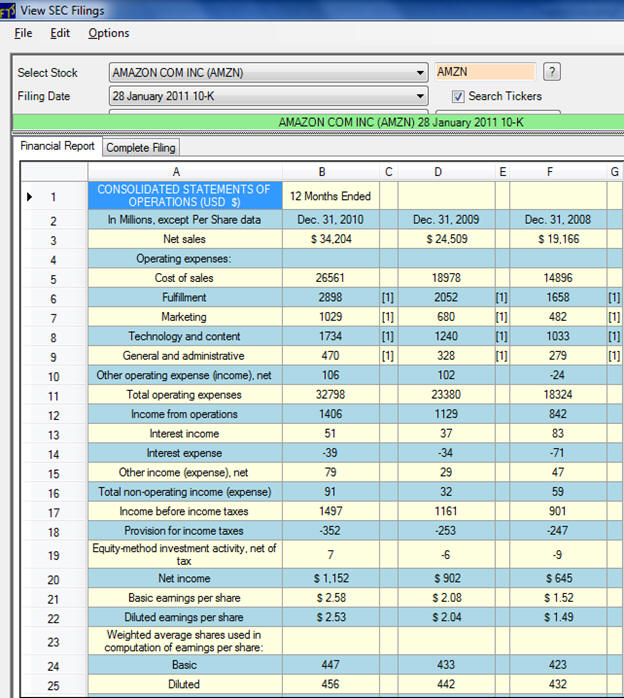2.6 Highlights of the main statements
In the appendix, we describe the contents of each of the four major
financial statements in detail.
These details are important, and we put them in the appendix
so that you can look them up easily when needed.
The last part of the appendix describes the linkages between
the statements. Here,
we highlight the main parts of each report, using Amazon’s January
2011 10-K as an example.
2.6.1 The Consolidated Balance Sheet
Also known as the “statement of financial position,” this statement
summarizes the assets and liabilities of the company:

You can see the items that make up the assets and liabilities.
There is a distinction between short term assets (called
current assets) and other assets, and similarly for liabilities.
The statement tells you at a glance what the company owns and
what it owes.
2.6.2 The Consolidated Income Statement
Also called the “consolidated statement of operations,” this
statement tells you about the profitability of the company:

Revenue from sales is at the top, and then payments are subtracted
to arrive at the net income (also called earnings or profit).
2.6.3 The Consolidated Statement of Shareholders (or Stockholders)
Equity
Intuitively, the value of what the shareholders (or stockholders or
owners) own is the difference between the assets and the
liabilities. One way to
think about it is to understand what happens if the firm was to be
sold. The value of the
assets would be received and the liabilities would have to be paid
off; the rest would be divided among the shareholders. The
components that affect shareholders equity are shown in this
statement. For example,
retained earnings (profits minus dividends) add to shareholders
equity. Treasury stock
is stock that has been issued but has been repurchased by the
company and so reduces shareholders equity.

2.6.4 The Consolidated Statement of Cash Flows
This statement tells you about cash inflows and outflows during the
period covered by the statement.
Cash and cash equivalents (holdings that can be readily
converted to cash, like Treasury bills) change because of three
activities: operations (payments for goods, cash received from
sales), investments (e.g. gains and losses from financial assets,
sale of assets), and financing (e.g. issuing debt, payment of
dividends):

 office (412)
9679367
office (412)
9679367